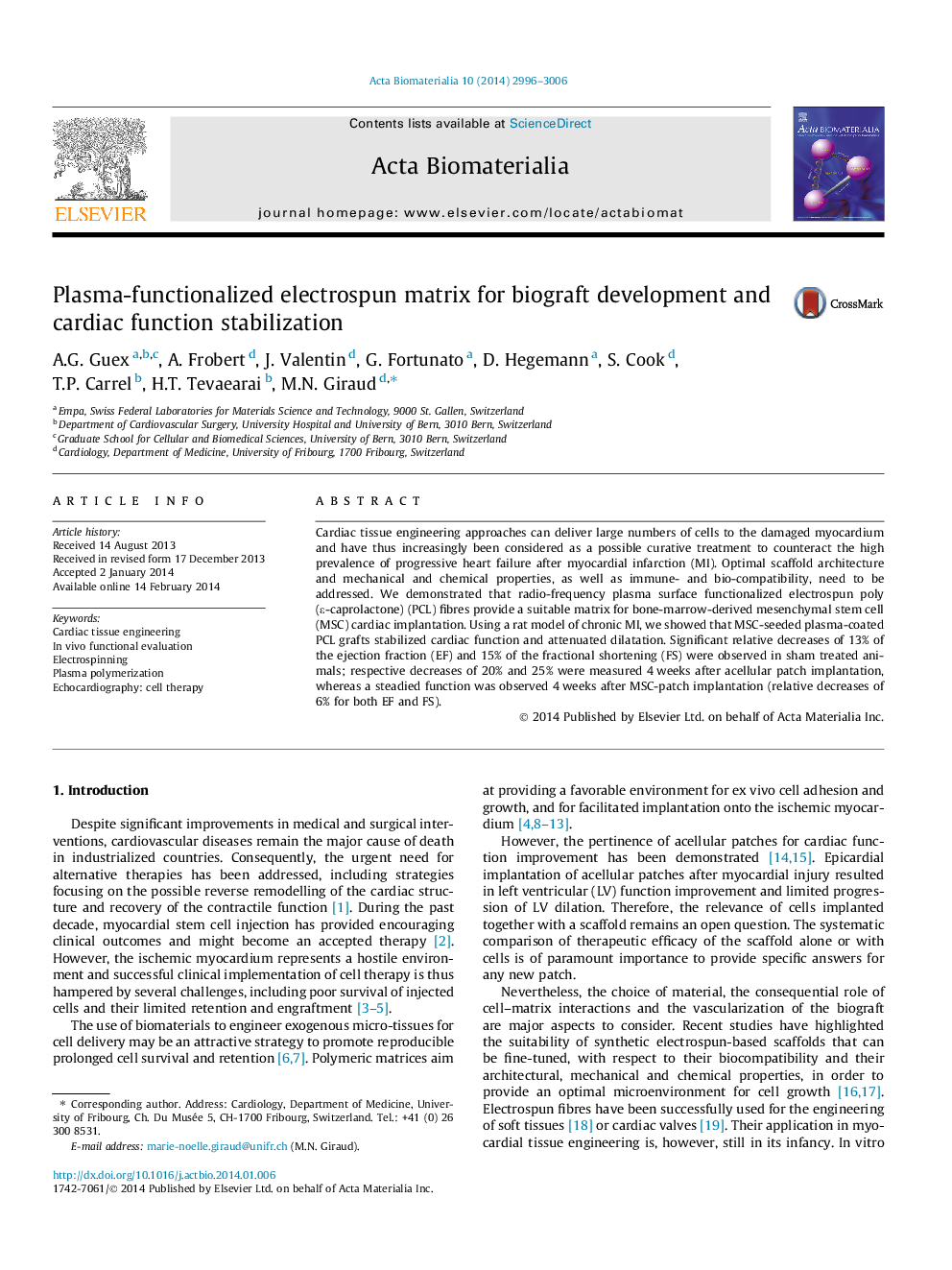| Article ID | Journal | Published Year | Pages | File Type |
|---|---|---|---|---|
| 409 | Acta Biomaterialia | 2014 | 11 Pages |
Cardiac tissue engineering approaches can deliver large numbers of cells to the damaged myocardium and have thus increasingly been considered as a possible curative treatment to counteract the high prevalence of progressive heart failure after myocardial infarction (MI). Optimal scaffold architecture and mechanical and chemical properties, as well as immune- and bio-compatibility, need to be addressed. We demonstrated that radio-frequency plasma surface functionalized electrospun poly(ɛ-caprolactone) (PCL) fibres provide a suitable matrix for bone-marrow-derived mesenchymal stem cell (MSC) cardiac implantation. Using a rat model of chronic MI, we showed that MSC-seeded plasma-coated PCL grafts stabilized cardiac function and attenuated dilatation. Significant relative decreases of 13% of the ejection fraction (EF) and 15% of the fractional shortening (FS) were observed in sham treated animals; respective decreases of 20% and 25% were measured 4 weeks after acellular patch implantation, whereas a steadied function was observed 4 weeks after MSC-patch implantation (relative decreases of 6% for both EF and FS).
Graphical abstractFigure optionsDownload full-size imageDownload high-quality image (91 K)Download as PowerPoint slide
